Fisher F75 V2 Plus and F75 V2 Plus F-Pulse
Categories: Fisher F75 metal detector
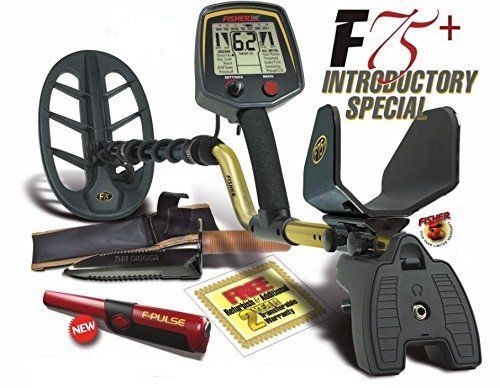 Not so long ago, we covered in detail the differences and advantages of the new V2.0 version of the Fisher F75 detector. We were pleased to find out that the new version is not just a cosmetic change, as is unfortunately often the case in similar cases. Although the new F75 V2.0 looks exactly the same on the outside, we find a number of significant innovations that will make the search more efficient and convenient. But that's not all.
Not so long ago, we covered in detail the differences and advantages of the new V2.0 version of the Fisher F75 detector. We were pleased to find out that the new version is not just a cosmetic change, as is unfortunately often the case in similar cases. Although the new F75 V2.0 looks exactly the same on the outside, we find a number of significant innovations that will make the search more efficient and convenient. But that's not all.
Thanks to the stability that the detector exhibits even at maximum sensitivity settings, its excellent performance can now be fully exploited. Fisher The F75 V2.0 can rightly be considered a truly versatile detector with unrivalled sensitivity, excellent discrimination capabilities and a great ground tuning system. The result is not only an enormous depth range, the instrument also allows us to findthe smallest metal objects such as coins and fragments of gold, platinum or silver jewellery. All of this also applies to sites with high concentrations of Fe waste and, most importantly, to sites with high mineralisation and difficult soil conditions.
We would now like to introduce Fisher F75+ (Plus), which is actually F75 Ltd V2.0 but without the small 13cm DD probe and additional accessories consisting of 2 unit packs with electronics, a probe cap and a camo cap. Now you're probably wondering why all the hype when the F75 LTD V2.0 is already sold here. I'll try to explain. It is known that Fisher the F75 LTD V2.0, with the bP booth process plugged in, goes some 20% deeper than the standard F75, which does not have this program. This makes the F75 LTD, along with several Minelab models, one of the absolute deepest metal detectors on the market today. However, the price difference between the standard F75 and the F75 LTD is 7k and that may seem too much to some. Although we know that the F75 LTD V2.0 has an additional probe and various other accessories and add-ons in addition to the mentioned programs, but not every detectoristdetectorist will say that he will probably never use the small probe anyway, he doesn't need the packaging with the cap, and if he ever wants it, he can buy everything individually. I have pointed this fact out to the Fisher bosses many times in the past, asking why they don't make a model with the bP program like the LTD has, but without the extras, and offer the detector for less and more acceptable money to us.
If the price difference was smaller, say 2 or 3 thousand crowns, there would be many a searcher who would seriously consider it. Since I probably wasn't the only one with such an idea, Fisher in the US has come up with just such an offer since this year and started selling a model under the F75+ designation that meets exactly what we asked for. But that's not all, for fans of handheld tracking detectors there is also a variant of the Fisher F75 Plus F-Pulse. This is the Fisher F75+ in SETU with the new F-Pulse pulse pinpointer, which thanks to the pulse induction technology used has a greater depth range than allIt is waterproof up to 3 meters and is not bothered by any mineralization including iron ore, basalt and can be used in salt water without any problems. This SET also includes a special dagger for finds including a sheath. And now the best news at last. Fisher The F-Pulse in the set with the F75+ costs only 2.000 CZK, which is more than a good price for one of the absolute best finders on the market (prices of such pinpointers normally range between 3500 and 5000 CZK).
In the previous article we models Fisher F75 Ltd V2.0 and F75 V2.0 were not particularly separated and described, because except for two added depth programs bP and CL and a small 5" DD coil they are identical metal detectors and so what was written about one is also valid for the other. However, there are significant differences. It has been tested by practice that the 2 mentioned programs do real wonders in terms of performance, which can be expressed by a 20% increase in depth range compared to the other programs. Of course this is not true in general, always and everywhere and in the following lines I will try to explain how it actually works. The Fisher bP program was originally intended to be used in places where it is not possible to put the probe completely down to the ground, either because of tall grass, bushes, roots or similar obstacles. In general, this program is advantageous to use at any site with dense vegetation where we will not be able to get the detector probe completely to the ground and move it just above the surface. Booth Proccess will allow us to penetrate to the subject at a greater distance while maintaining good stability and tonal response. Cache Locating The CL process goes even deeper, but the reaction speed here is already significantly slow and its usefulness is thus quite limited.
Over time, it has become clear that the bP program can be used wherever there is not a large concentration of scrap metal (mostly forests, meadows, pastures, etc.). However, if we are looking at the bP program, we have to keep in mind that we need to slow down the probe movements. This is because if we move the probe too fast when it is placed close to the ground, the detector may have a harder time separating objects placed close together. To keep the separation capability of the instrument at the same level as in dE or JE, we simply need to slow down. This also implies that, unlike these programs, bP may not be suitable or effective for sites with higher concentrations of metallic waste. However, this program offers other benefits besides the increased outreach of about 20%. Many detectorists find that after hours of searching, fatigue causes them to stop paying attention to the correctThe correct technique of placing the probe (horizontally and as close to the surface as possible) and thus may lose signals. The bP boost Process is more tolerant of incorrectly waving the probe above the ground than other programs and is therefore beneficial to use at such times. Another advantage is that the bP program extends the duration/length of the tone, so for many prospectors this audio response can certainly beThis will also make the recognition of coloured targets clearer and thus easier. While slowing down probe movements may cause some loss of sensitivity when searching with dE or JE, the bP program will allow slowing down without any loss of sensitivity. What I consider a good thing is that it is possible to switch back to the dE program at any time from the bP process. Simply press and hold the red Menu button to temporarily engage the dE program. This can also be used to back-check signals. This is because under certain conditions the dE program can identify an object better, more accurately, and this is due to the fact that the signal evaluation in one process may be different than in the other processes.
Before I get to the description of the recommended setup of the Fisher F75+ (F75 Ltd V2.0) I would like to stop at the performance of this metal detector, what depth ranges we can actually expect from it.When Marek wrote on Treasure Hunter that he was using the new Minelab Equinox 800 to take old socialist 1ccs at 35cm when testing it on his polygon, I fairly gawped. I wondered if that wasn't over the top. I didn't give up, and when I finally got one piece from him, I wanted to try it for myself as well and also compare it with my favorite LTD. Right off the bat, I'd like to mention here that the new Equinox 800 is a really hilarious detector and I'd say it's at least on par with the E-Trac in terms of performance and efficiency. It is also much lighter and thanks to the quick and easy to select programs I find it more fun. So I set about occupying the local sandpit for the kids and started burying and measuring the crown. This is admittedly a thing I don't do very often, as I think it's a pretty subjective method of evaluation, but I didn't let it get to me. Why subjective? Let me try to explain. When you know there's something buried down there, you play with it for so long, trying to catch the signal... until he finally coughs something up. And that's the problem, because the important thing is whether he'd stop over the signal in the field. I think, and long experience has confirmed me in this, that 35 cm on coins of this size are really absolutely limiting ranges. However, when I also got to 34 cm, I have to admit that I was impressed.
With the standard Fisher F75 in the JE program I went 2 cm less, 32 cm, and even with this result I was pleasantly surprised. But then I sat on my butt even more when trying my favourite F75 Ltd V2.0 in bP (Booth Proccess - this is missing from the standard F75 and is the main and crucial difference between the two models). I was catching weak signal/tone up to 38 cm and that's really a bomb (I've now achieved the same result with the new Fisher F75+, but it's no surprise as it's basically the same detector). At the same time, I am convinced that if I could set up the Minelab Equinox 800 as well as my LTD, it will definitely go a bit deeper and make that 35 cm with ease.
FISHERF75+ (Plus) SETUP
Disc. Level: 0 I want to hear everything including the cut.ATTENTION:When set to level "10" and above,
most irons are filtered out. However, this also risks crossing over small things from
non-ferrous metals masked by the larger Fe
Sensitivity: 85-95 I set it to a level that makes the detector stable and preferably free of
of false signals.
Notch:1 I don't use discrimination windows because I might pass over small
camouflaged targets.
Tones: 2F, 2h, 2L Irons emit a low growling tone, non-ferrous metals whistle up.
The volume, pitch, and length of the tone depend ondepends on size, depth, composition and shape
of the object. I personally don't use other tone modes because of the variable
VCO tone offers me more information than any digital tones. It's actually
search as if with analog sound resolutionm at the same time numerically
evaluation on the display (1 - 99).
Some "militarists" who mostly search larger objects, prefer
the 3-tone setting: deep / medium / high. Iron, if not round
shape (nuts, washers, articleschain links, bent nails or their round forged
heads, etc.) or larger compact sizes (cans, ploughshares, etc.),
low-pitched grumbles. Under the middle tones are usually common coins,
cartridges, etc. (but beware, even the middle tone can surprise - ½ ID stamps,
gold ring, etc.) and high notes indicate that it could be a nice item
in the form of an ID stamp, badge, buckle, larger coin, medal, etc. (but
beware, a larger compact piece of aluminum plate, etc. is also reported this way.). After
time, everyone learns to read the numeric ID from the display as well.
Process (Program):
IS - a preamplifier is involved, so the detector is more sensitive to even the smallest things. I use this
program most often when searching in fields.
dE- the preamplifier is deactivated, the detector operation is very stable. Ideal for the beginning, when
behavior of the device is not yet precisely controlled. Suitable for places with a higher concentration of metal
metallic waste, higher mineralisation and/or stronger electromagnetic interference.
FA - super fast response. Depth range lower, but due to excellent separation best for
searching in places with extremem period iron infestation, where it can detect
small colored targets among the iron scrap, which can often be masked.
PF - suitable for rough terrain such as furrows, sod, etc.
bP - greatest power and range. I use in woods and meadows with small to medium
concentrations of metallic debris. When searching in bP you need to slow down the probe movements, so
not suitable for heavily contaminated sites.
Finally, I would like to point out one more general characteristic that I consider to be one of the most important for successful and effective searching. The Fisher F75 detector in all its variants is distinguished by its fast response, which in practice means that the tones of signalled objects in the ground are heard immediately after the probe passes over them. The overall result is then better separation in places with a high concentration of iron and generally all objects lying close together. In V2.0, an additional program called FA (Fast Proccess) has been added, which is even 2 times faster than the existing dE and JE programs. It doesn't go as deep as those two, not to mention bP (that's not its purpose after all), but its separation is downright phenomenal, the fastest I've ever encountered in a detector.
You can find the new Fisher F75 V2 Plus detectors on LP here:
Metal detector Fisher F75 V2 Plus price 17 990 CZK incl. VAT
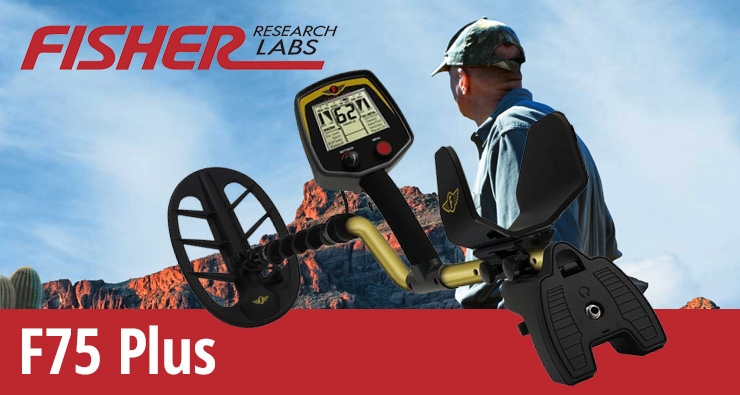
Metal detector Fisher F75 V2 Plus Pulse price 19 990 CZK incl. VAT
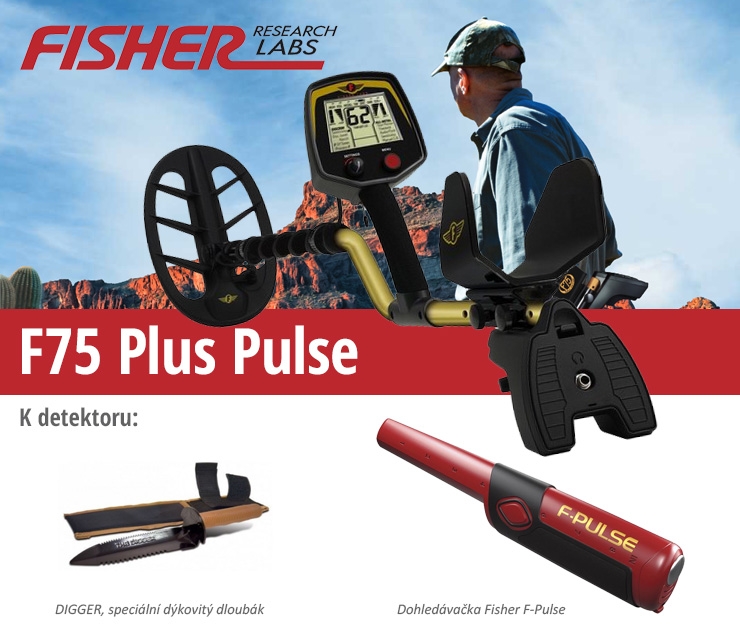
New pinpointer Fisher F-Pulse
Metal detector Fisher F Pulse uses pulse induction technology. This makes the tracer immune to high mineralisation and salts. The pulse induction technology also gives the detector a great range with the ability to set three levels of sensitivity. Control is handled by a single button which, along with the quality workmanship and waterproofness to 3 meters, makes Fisher's new fishfinder a great choice.
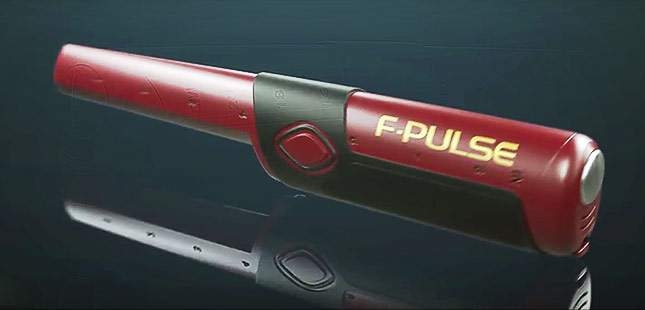
Technical specifications
- Pulse Inductive
- Great range
- Identification, vibration and audio
- Adjustable sensitivity level (3 levels)
- Audio loss alarm
- One-button operation
- Power supply 2x 1.5V AA batteries
- Scale on the body of the tracker
- Resistance in highly mineralized locations
- Waterproof to 3 meters
- 2 years warranty
Fisher F Pulse price 3 990 CZK incl. VAT
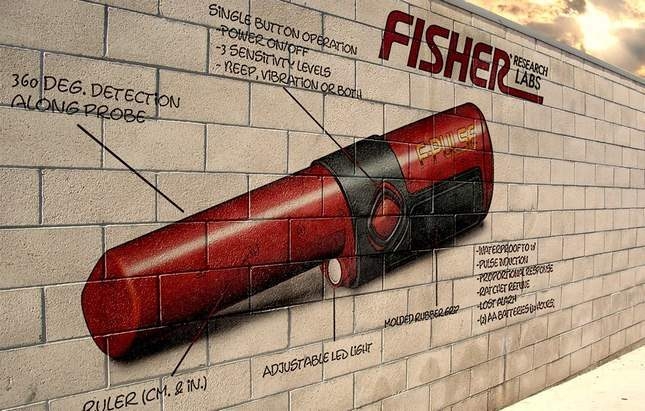
The article is included in categories: